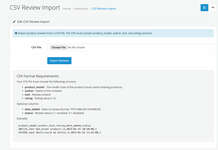Have you ever seen a website or installed an application with a convoluted design and voluminous content? After wasting too much time, you deactivate the program or give up on the website, ending up on the support forum to locate the instructions. We’ll let you know that you’re not alone because 38% of consumers would often give up on a web or app if the information and page layout are not visually appealing and easy to use. In any case, what does it mean? A poor user experience is nearly always the consequence of poor UI UX design services with an excessive number of superfluous components, and regrettably, around three-quarters of users are less inclined to return to a website or application as a result.
The Importance of User Interface (UI) & User Experience (UX) Design
If you compare UI/UX design to a book cover, it will be simpler to grasp. If readers think the book’s cover is uninteresting enough to put them off reading it, they will never get the chance to discover how amazing the content is. That’s only one instance.
Even while the features you provide can easily address consumers’ problems, a bad user experience, and a complex user interface might discourage users from ever utilizing your apps in the first place. ZCoastMedia claims that 75% of the evaluations are based on how the websites look, which highlights the importance of UI and UX in web application development once more.
Still, a lot of online and app developers place less emphasis on and underestimate the value of UI/UX design. Perhaps they will have to reconsider if they understand the crucial factors that make UI/UX design so crucial to the success of websites, apps, or other digital products:
Good UI/UX Design Improves User Engagement & Satisfaction
It goes without saying that visually appealing and easy-to-use websites and applications will be preferred over those that are not. In addition to making it easier for users to interact with websites and apps, well-designed user interfaces also enable most users to complete tasks more quickly, which raises user happiness and engagement levels.
In the case of websites, having an enjoyable user interface and a pleasant stay time can also increase dwell time, or time-on-page, which is good for the value of your page. A web page’s typical dwell time is between 10 and 20 seconds, so if you can keep people on your site for longer than that, it indicates that they are paying attention to what you have to offer.
Effective UI/UX Design Drives Better Conversion & Revenues
Higher conversion rates and more profits are a direct result of happier and more engaged consumers, don’t they? Better conversion and revenue generation from online apps are the ultimate goals of every organization, and UI/UX design is essential to reaching that.
Due to the abundance of applications and websites available to customers in today’s technological age, it is more crucial than ever to differentiate yourself from the competition by providing superior user experiences. Without effective UI/UX design, it is impossible.
According to Forrester Research research, a website’s conversion rate may increase by 200% with an ideal UI design and by up to 400% with a well-designed UX design. User interface and user experience are equally effective techniques that you may utilize to draw in and gain more new users for your online applications. It doesn’t end there.
Build Brand Awareness & Acquire More Users
A positive first impression is one of the indisputable advantages of having a strong UI/UX design for your apps. This impression is crucial for attracting new users and keeping existing ones interested.
Simple usability and attractive interfaces are what most people value, thus goods with strong UI UX design services will undoubtedly draw in new customers and encourage them to stick with them. Additionally, one of the exclusive features that customers can only discover in your product is the UX and UI design created by your team.
Put another way, one of the main factors in increasing brand recognition is your UI/UX design style. When people talk about a positive user interface and experience, the majority of consumers will be instantly reminded of your product if you execute it well.
Want an Engaging UI/UX for Your Website or Apps? Follow These 10 Best Practices
It is your responsibility and the responsibility of your team of UI/UX designers to ensure that the visual aspects and product design elements complement each other. UI and UX are equally crucial in the building of any website or app. Here are some suggestions that could help with your UI/UX design process:
As always, knowing your end users—the people who really use your product—is an essential first step you should never omit when developing or creating a digital product.
Drawing a portrait of your intended user base and identifying their needs, pain areas, and other details should be your first step. Next, consider how you can use the improved UI and UX design to assist people in completing their duties and provide a positive experience.
All of those items can be categorized as “user expectations.” You need to be impartial and adopt the perspective of actual users in order to achieve so correctly.
Conduct Thorough User Research
It’s time to confirm your user demands with actual users once you’ve developed them. User research may be conducted using a range of UX research techniques, such as polls, interviews, surveys, and more. Never be afraid to probe customers about their thoughts on the UI/UX design of your product, what they like and dislike, and whether or not they find it simple to use. The users themselves are the best people to assist you. Consider the suggestions and make use of them as a guide during the design phase.
Do Not Overlook Product Content
Text and visual material related to the product is also a crucial component of UI design. They make a significant contribution to your product’s overall user experience. While the graphics should be pertinent and aid customers in rapidly understanding the goods, the sentences should be simple to read and comprehend. Content plays a crucial part in UI and UX design and has the power to create or break the user experience.
Be Consistent in Your UI Elements
Another crucial component of a successful UI design is consistency, and each alteration to a visual element has consequences. Once you’ve decided on your product’s general aesthetic, make sure that the interface design uses the same typefaces, colors, and other visual components. Utilizing an excessive amount of colors or typefaces can simply confuse users. Adhere to a limited color scheme at all times.
Use no more than two or three typefaces and make sure they are used consistently throughout the design. This also applies to other UI patterns and design components like buttons, icons, and so on.
To achieve a unified aesthetic, use them consistently throughout the user interface of your product. Users will feel more at ease with your product if it has a consistent design since they won’t be overloaded with new elements all at once. For future use, think about creating a guide with the UI design aspects for your product.
Do Not Forget User Testing
User testing is essential to guaranteeing that the interaction design functions flawlessly and error-free prior to release. Throughout the design phase, you will test your product with actual consumers, much as in user research, moving from low-fidelity to high-fidelity prototypes.
At every level, gather input and adjust the UI/UX design accordingly. You can only be certain that your product is useful and easy to use by testing it on actual people. Avoid assuming anything about the requirements and preferences of users since this might lead to poor design choices.
Summary
It takes work to create a UI/UX design that works well. It takes perseverance, commitment, and a great deal of trial and error. But if you adhere to the aforementioned best practices, you should have no trouble producing a fantastic UI/UX design for your project. Throughout the design phase, remember to test your product with actual users and keep the needs of consumers foremost at all times. You may continually enhance the design and produce the greatest user experience for your product with the help of customer feedback.






